- Savage Blog
- Overview of the Basics of Skeet Shooting
Overview of the Basics of Skeet Shooting
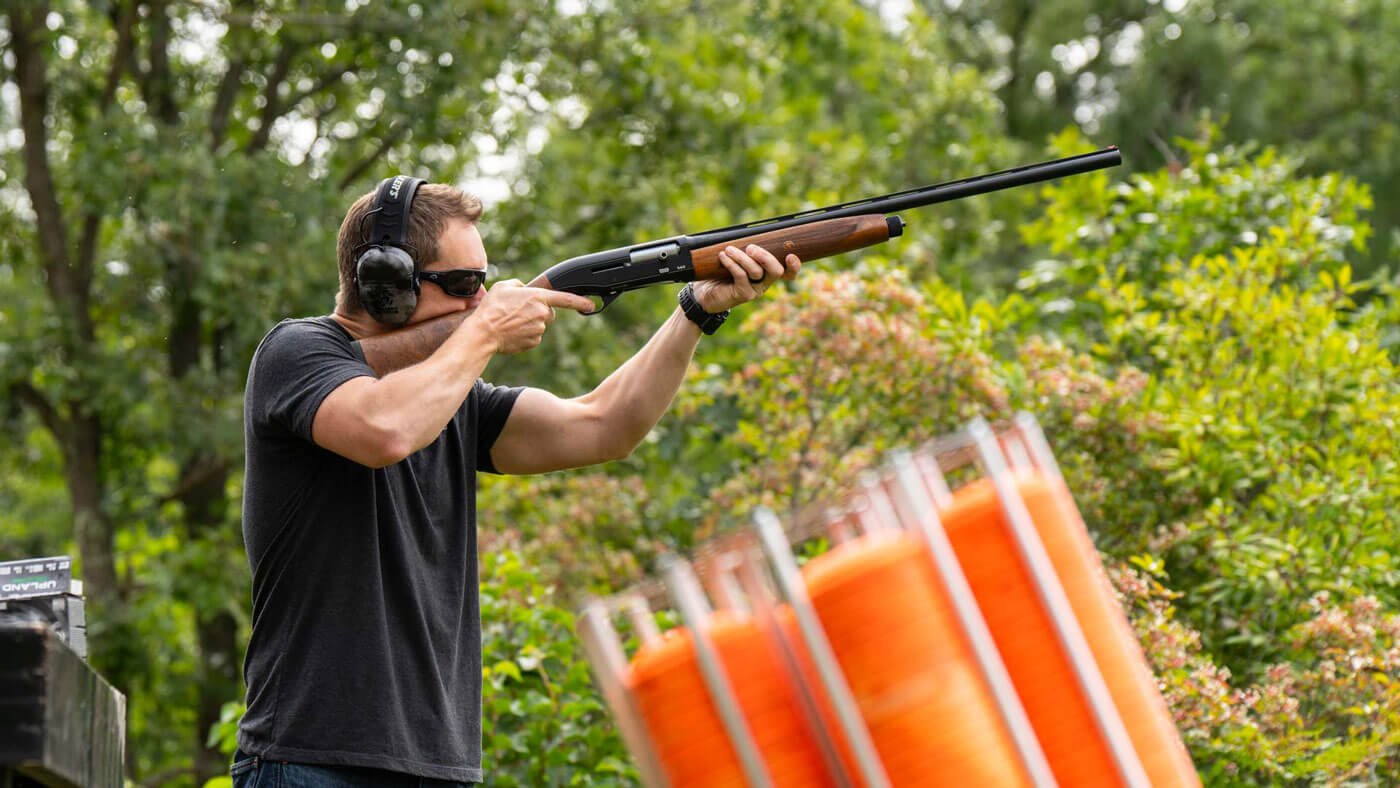
Skeet shooting is a shotgun game that is not only a fun recreational shooting sport, but an excellent practice for various types of bird hunting. It was started in the 1920s as a way for hunters to get more practice for hunting various bird species by simulating the various angles of flight that hunters may see in the field. Targets come from high and low, as well as in singles and pairs. Much like trapshooting, you will shoot 25 targets from multiple stations on the field. While the basics of skeet shooting are slightly more difficult to learn than other shotgun games like trap shooting, it is a worthwhile shotgun sport to learn in order to improve your skills and practice for hunting birds such as dove, pheasants, quail, and other upland birds. We’ll cover the rules and layout of a skeet field, what equipment you need for skeet shooting, shotgun selection, ammunition and choke tubes, and some tips for getting the most out of your skeet shooting experience as a beginner. So, let’s dive into learning the basics of skeet shooting!
Rules and Field Layout
Field Layout
A skeet field lays out much differently than a trap field or sporting clays range would, with its most prominent feature being two “houses” on each side of the field. The house on the left is referred to as the “high house”, while the house on the right is referred to as the “low house”. As you may have guessed, the high house will throw targets higher into the air, while the low house throws targets lower. Unlike trapshooting, these targets will have the same flight path each time they are thrown. This allows for you as a shooter to set up hold points, where you will hold your shotgun while waiting for the target.
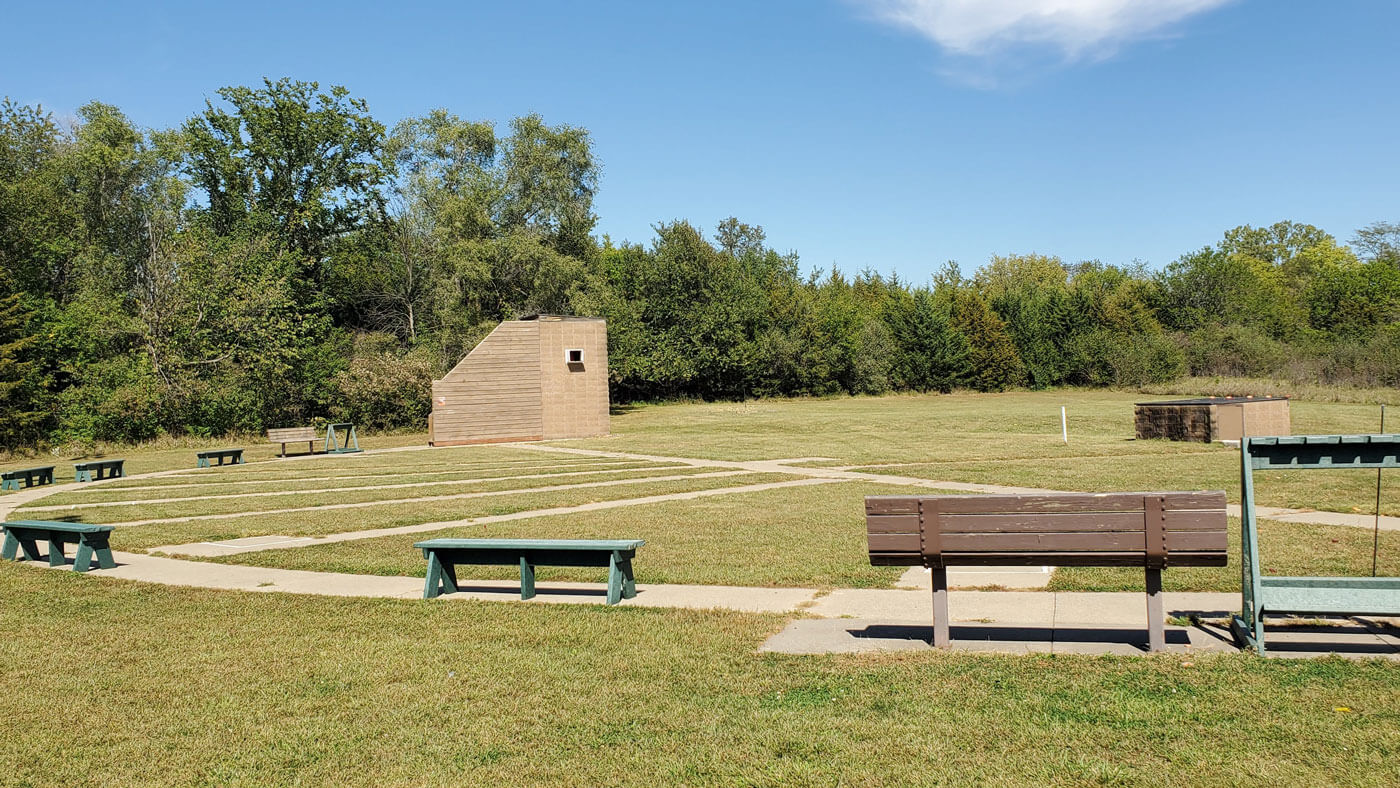
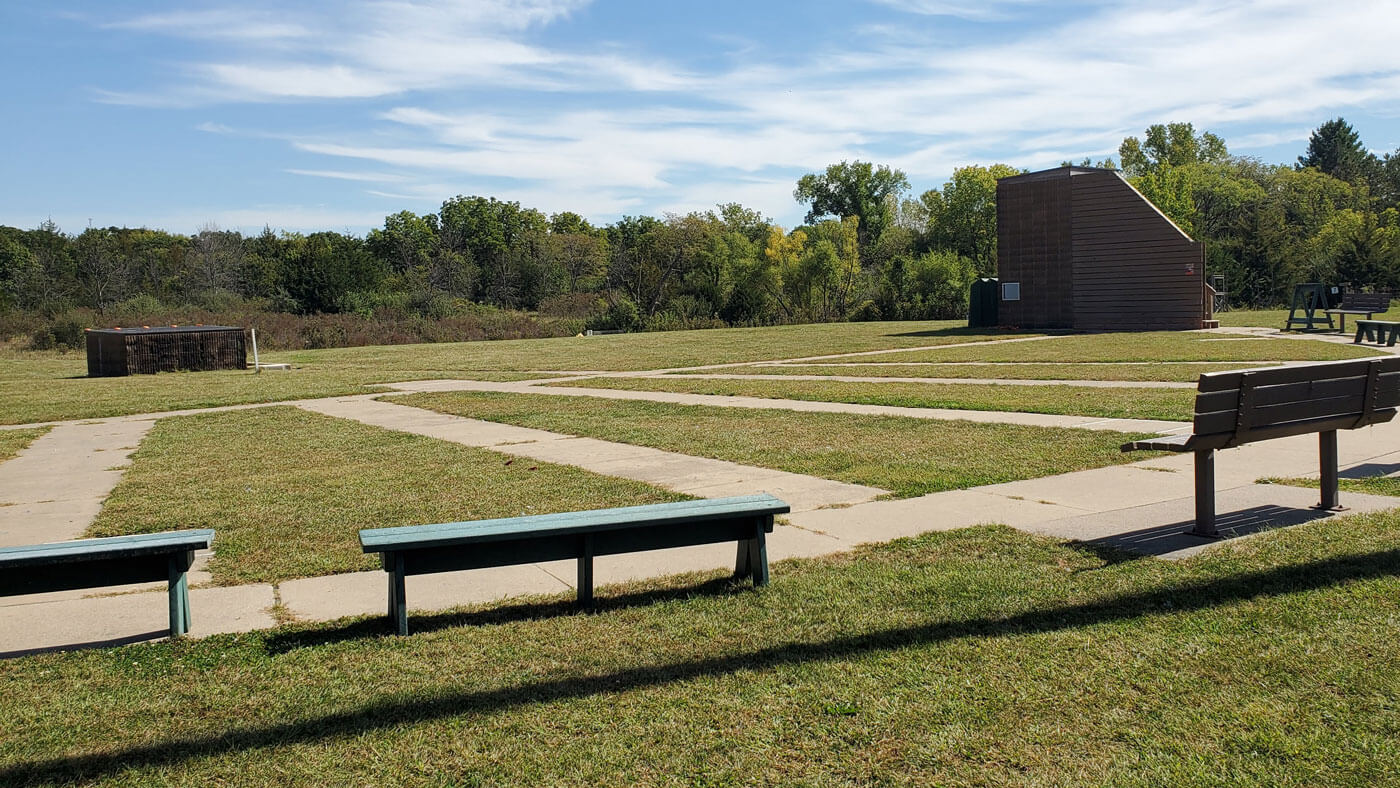
A skeet field will have a total of eight stations. Seven of these stations are located on an arc that runs from the high house to the low house, with each station about 27 feet apart. The eighth station is located in the middle of the field and has a different shooting setup than the other stations. You’ll be shooting a target that’s coming towards you high and fast on station eight, rather than a target that’s flying away from you or coming at you at a slower speed.
Rules
The rules of skeet are a little more complex than the rules of trapshooting or sporting clays, but they are still relatively easy to learn and follow as you shoot more. Here are some of the key rules to know when learning the basics of skeet shooting:
There can be a “squad” of up to five shooters on the skeet field.
The “squad leader” is the first shooter in the group and leads off the shooting at each station.
The course of fire begins on Station 1 by the high house and ends at Station 8 in the middle of the skeet field.
The shooter will call for a target by saying “Pull”, after which the trap operator will throw the target.
A target is called “hit” when it is broken and “missed” or “lost” when it is missed. Targets that do not have a physical piece broken off them and are only “dusted” do not count as hit targets.
Targets will be thrown in singles and doubles. Each single target is thrown one at a time from the designated trap, while the doubles are thrown simultaneously from each trap.
There are a total of 25 targets that are shot in a round of skeet. They are divided into 17 doubles and 8 singles.
When the shooter misses their first target, they then use their “option” to reshoot the target. If a shooter does not miss a target throughout the entire course of fire, then the “option” target is taken as a second low house target on station eight.
The course of fire for a round of skeet is the following:
Station 1 - High house, low house, double
Station 2 - High house, low house, double
Station 3 - High house, low house
Station 4 - High house, low house
Station 5 - High house, low house
Station 6 - High house, low house, double
Station 7 - High house, low house, double
Station 8 - High house, low house, option target (thrown from the low house if you have not yet missed a target).
While there are not nearly as many skeet shooting organizations as trapshooting organizations, the most popular national level group is the National Skeet Shooting Association. There are also several state level skeet shooting associations that you can join to practice, hone your skills, and learn the basics of skeet shooting. Many local trap fields will also have fields for skeet shooting, allowing you to practice both shotgun games in one place.
Skeet shooting equipment
The equipment needed for skeet shooting is essentially the same as in other shotgun sports. The core equipment needed is safety equipment, such as eye and ear protection. Ear plugs and slim ear muffs are usually preferred by skeet shooters, since these allow for the shooter to place their head more firmly on the stock without the bulkiness of regular sized earmuffs getting in the way. For eye protection, any shooting or safety glasses can be used. Some shooters will color over the lens of their non-dominant eye or put blinders on the side of their glasses to increase their focus. Neither of these are necessary but can be helpful if you find yourself having a hard time focusing on the target.
A trap bag or vest is also used to hold your boxes of shotgun shells that you will be shooting. Either option is suitable to use, but trap bags are typically more inexpensive and easier to obtain for newer shooters who are learning the basics of skeet shooting. Some shooters will also carry gloves and towels with them in order to wipe away sweat and moisture and improve their grip on their shotgun.
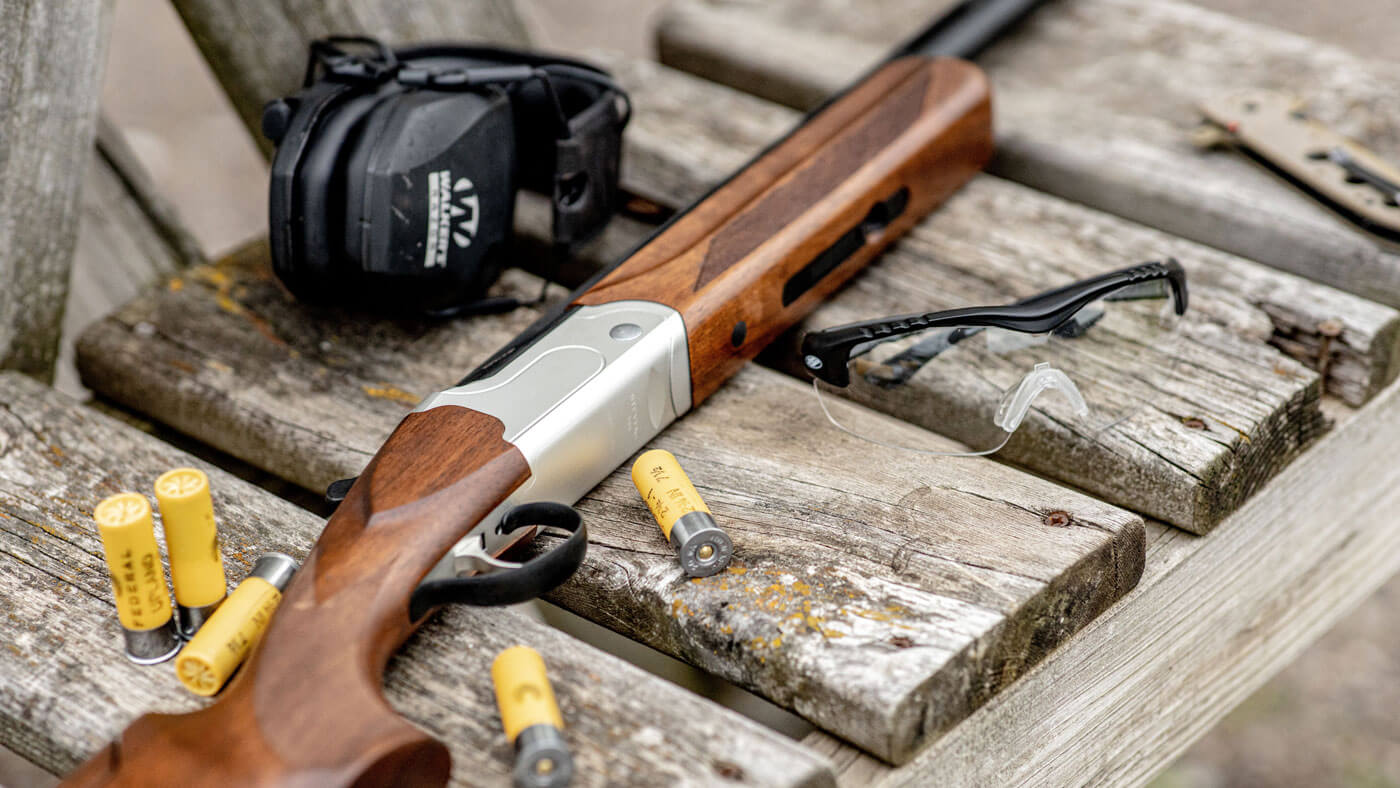
Shotgun Selection
Which shotgun you select is an important factor to consider when you are learning the basics of skeet shooting. There are two important parts of the shotgun to consider: the gauge and the action type. The gauge of shotgun you use is up to your personal preference and comfort level. Shotguns with larger gauges (greater bore diameter) will shoot a greater number of pellets than a shotgun with a smaller gauge (smaller bore diameter) but will often be heavier and have more recoil. For example, a 12 gauge will have more pellets in a shot pattern than a 20 gauge, but the recoil will also be greater on the 12 gauge when shooting it. The action of the shotgun you use will also come down to personal preference, with each having its own advantages and disadvantages. There are three main shotgun actions that are widely available. These are pump-action, semi-automatic, and break-action shotguns.
Pump-Action
Pump-action shotguns are good for new and novice shooters as they are common, relatively inexpensive, and easy to learn and operate. The shell is loaded and unloaded by pumping the slide of the shotgun, and this is entirely controlled by the shooter. However, pump action shotguns are not typically recommended for skeet shooting. This is because skeet shooting requires speed, especially when doubles are thrown. The extra time it takes to operate the pump on the shotgun can cause you to be slower in engaging the follow-up target, and make it harder for you to hit that target. Therefore, we would not recommend using a pump-action for skeet shooting.
Semi-Automatic
Semi-automatic shotguns operate like other semi-automatic firearms, where the shotshell is ejected automatically and a new shell is loaded after each shot, if the magazine is loaded. Semi-automatics are excellent to use for learning the basics of skeet shooting since they are , especially whenever you are shooting doubles. Semi-automatics are also typically lighter in recoil due to their gas or inertia driven recoil systems that help bleed off excess pressure. The Savage Renegauge is an excellent choice for skeet shooters who are looking for a semi-automatic shotgun that is reliable, easy shooting, and adjustable to nearly every shooter. For skeet shooters who are looking for a budget semi-automatic shotgun that will be a workhorse on the skeet field and the hunting field, the Stevens 560 is also a great option.
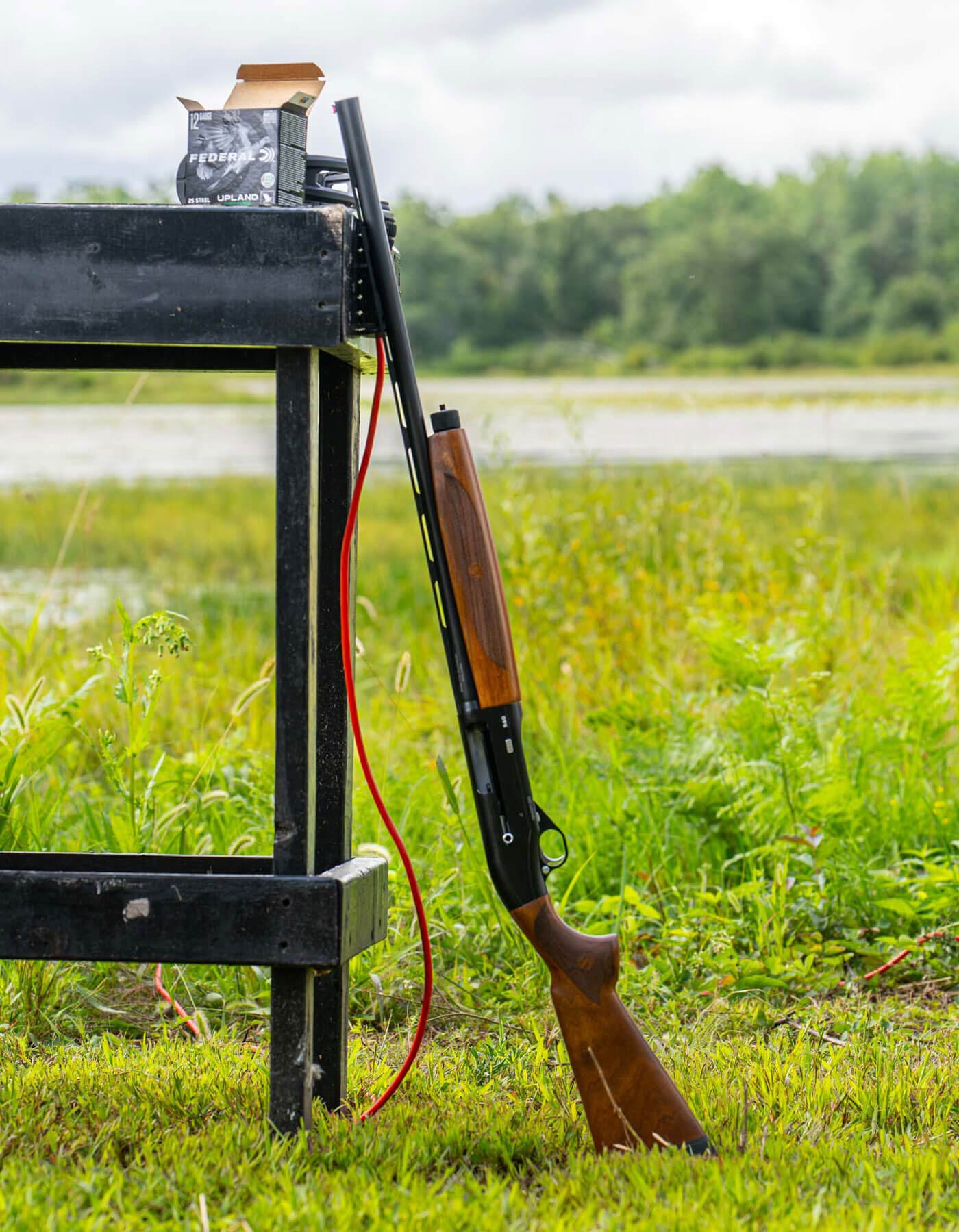
Break-Action
Break-action shotguns are fairly popular with shotgun shooters. Most break-action shotguns come as double-barrel shotguns, with two barrels either stacked on top of each other or side by side. This allows the shooter to have two shells loaded simultaneously, allowing for a rapid follow-up shot. Break-action shotguns are arguably the most popular shotguns that are used in skeet shooting today, and they are a common sight on the skeet field. They are perfect for having two shells ready for doubles stations, as well as being lightweight, ergonomic, and well balanced when swinging. Savage offers several different break-action shotguns in the Stevens 555 shotgun line, including a 555 Compact model for youth and smaller shooters, and a 555 Sporting model with 30 inch, ported barrels and an adjustable cheek comb.

Ammunition and Choke Tubes
The ammunition used for skeet shooting is essentially the same as the ammunition use for trapshooting. These are the most commonly available shotgun shells on the market today, and they are typically referred to as “game loads”, “target loads”, “field loads”, or something similar. These loads are typically lead shot and will usually have a picture of a clay target or a small game animal such as a dove or rabbit on the box. They will also usually say “Game Load”, “Field Load”, “Target Load”, or something similar on the box. Most target loads will have specifications similar to the following:
⅞ to 1 ⅛ oz. of shot
2 ¾ inch shell length
#7 ½ or #8 shot size
1150 to 1350 fps
If you find ammunition with similar specifications to those that are outlined above, then it will be great to use for skeet shooting!
When it comes to skeet shooting, the choke tube you select can have a great impact on your performance over the course of fire. The shots taken in skeet shooting are often much closer in comparison to other shotgun games, requiring the use of a more open choke for a wider pattern. When skeet shooting, look to use a skeet choke or improved cylinder pattern choke. Both of these choke tubes provide a fairly open pattern of shot, allowing you a wider margin of error to hit targets that are closer to you. Modified and improved modified chokes can also be used but may not be as effective on shots that are at closer range and coming towards you.
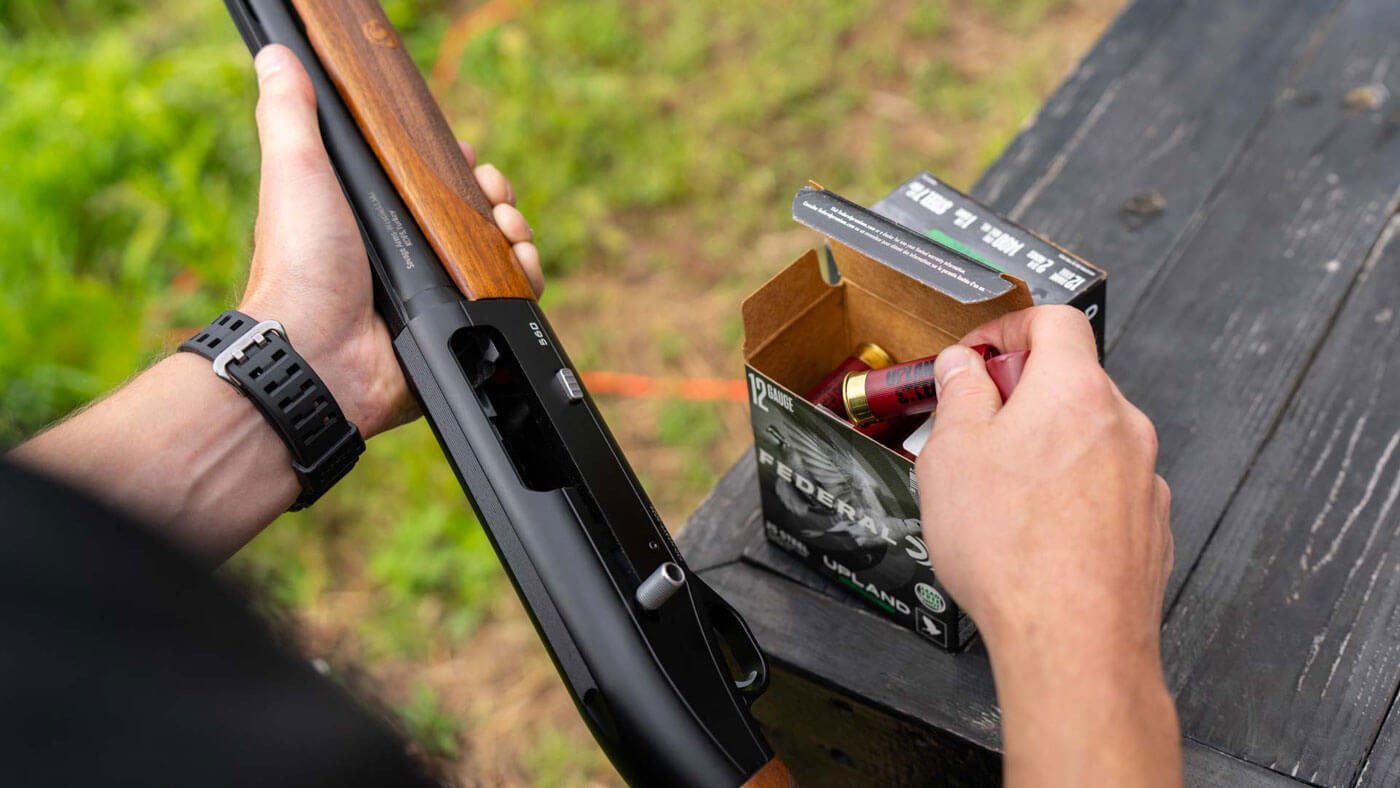
Shooting Tips
Learning the basics of skeet shooting is about more than the rules and proper equipment. Eye dominance, proper shooting form and stance, and proper shooting technique are also important to know as you are starting out. Here are some tips to keep in mind as you get started with the basics of skeet shooting:
Eye dominance
Eye dominance is one of the fundamental basics of skeet shooting that you should learn when you are first starting out. Whenever you are skeet shooting, you should be focused on your target, rather than the bead at the end of your barrel. As you are looking down the barrel at the target, make sure you keep both of your eyes open. This will help you have a wider field of vision, which is helpful for picking up the target out of the house faster. Your dominant eye is the eye that will naturally “take over” and direct your aiming as you focus on the target. If you don’t know which eye is your dominant eye, check out this blog post on determining eye dominance.
Stance and technique
Your stance in skeet shooting should be similar to that of other shotgun sports. Keep your feet shoulder width apart, your left foot (or right foot for left-handed shooters) a few inches in front of your right foot, and bend slightly at the waist to help absorb recoil. The main difference in your stance will be that you will want to point your front foot near the area where you plan to break the target. On most stations, this will be towards the middle of the target’s flight path, or what is referred to as the center stake.
One unique aspect of learning the basics of skeet shooting is learning about hold points. Since skeet is predictable, due to targets being thrown the same way each time, you can determine where you should set up for your shot each time for the best chance of breaking the target. A good rule of thumb for most stations is to have a hold point that is halfway between the house the target is coming from and the center stake. Your barrel should start even with the middle of the thrower window for the house, and then move out to your hold point. Stations 1, 7, and 8 are a bit more unique. For stations 1 high and 7 low, you will want to hold your barrel straight out in front, as the target is coming from behind. For station 1 low and 7 high, have your barrel pointed a few feet off of the thrower window near the target’s flight path coming out of the house. For station 8 on both houses, hold your gun barrel even with the top of the thrower window for each house and move the barrel about 10 feet away from the house.
While you will have your shotgun held at a specific point for each station, your eyes should always be looking at the house when the target is thrown. This helps you keep your eye focused on the target when shooting and allows for your gun barrel to naturally follow your eyes and come up to meet the target for the shot. Keep your head on your stock, but make sure you move your eyes each time to watch the target coming out of the house when it is thrown.
Skeet shooting can be a fun way to challenge your shooting skills and get some practice in for fall bird hunting seasons. It provides a variety of distances, target angles, and movements to help improve your skills and mix up your shotgun shooting practice. Whether you're a beginner looking to learn the basics of skeet shooting, or a season target shooter and hunter looking for the next challenge to help keep you on your toes, give skeet shooting a try and put yourself and your equipment to the test!

